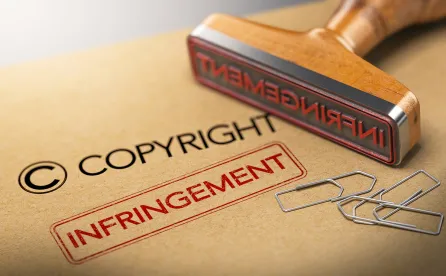The US Court of Appeals for the Fourth Circuit concluded that the copyright on a photograph of an entertainment icon was the subject of a valid copyright registration and that use of the photograph in an article missing the author’s required attribution language was not otherwise “fair use.” Philpot v. Independent Journal Review, Case No. 21-2021 (4th Cir. Feb. 6, 2024) (King, Wynn, Rushing, JJ.)
Larry Philpot, a professional concert photographer, photographed Ted Nugent at a concert in July 2013. In August 2013, Philpot registered the photograph with the US Copyright Office and published the photograph on Wiki Commons under a Creative Commons License specifying that anyone could use the photograph for free as long as they provided the following attribution: “Photo Credit: Larry Philpot of www.soundstagephotography.com.”
In 2016, Independent Journal Review (IJR) published an article titled, “Signs Your Daddy Was a Conservative.” One of the “signs” listed in the article was whether “your daddy” was a fan of “The Nuge.” The article used Philpot’s photo in conjunction with this list item. Rather than including the required attribution with Philpot’s photo, IJR included a link to Nugent’s Wikipedia page, which in turn linked to the Wiki Commons site where the photograph was hosted with the proper attribution. IJR generated only $2 to $3 in advertising revenue from the article.
Philpot sued IJR for copyright infringement in May 2020. IJR moved for summary judgment based on its fair use defense and alternatively for a finding that Philpot’s registration was invalid. Philpot moved for summary judgment of valid registration and that IJR’s use did not meet the requirements of fair use. The district court found that there was a genuine issue of material fact regarding the validity of Philpot’s registration but granted IJR’s motion for summary judgment of fair use. Philpot appealed both findings.
Following the statutory four-prong fair use framework and the Supreme Court 2023 fair use analysis in Andy Warhol Foundation for the Visual Arts v. Goldsmith, the Fourth Circuit considered whether IJR’s use of the photo was transformative and of a commercial nature or for nonprofit educational purposes. A secondary use is transformative when it has a “further purpose or different character” than the original work. The larger the difference is, the more likely a court is to find that the use constitutes “fair use.” The district court found the work transformative because IJR placed the photo in a new context (i.e., a list of “Signs Your Daddy Was a Conservative.”) The Fourth Circuit, however, found that IJR’s use was not transformative because the two uses “shared substantially the same purpose,” which was to depict Ted Nugent. Beyond cropping negative space in the photo, IJR did not alter or add new expression to the photo and did not “add new purpose or meaning.”
In considering whether the work was for a commercial purpose, the Fourth Circuit questioned whether IJR stood to profit from its use of the photo, not whether IJR was successful at that venture. While the article generated only $2 to $3 in advertising revenue, IJR is a for-profit corporation that realized revenue from using Philpot’s photo. Thus, the Court reasoned that “IJR’s use of the Photo was commercial.”
In deciding the summary judgment motion, the district court did not weigh the second or third prongs of the fair use defense (i.e., the “nature of the copyrighted work” and “the amount and substantiality of the portion used in relation to the copyrighted work as a whole.”) The Fourth Circuit, however, addressed the issue and found that both prongs weighed in favor of a finding of no fair use because Philpot’s photograph was a creative, aesthetic expression significantly copied by IJR.
Lastly, the Fourth Circuit found that “the effect of the use upon the potential market for or value of the copyrighted work” also weighed against a finding of fair use. The Court examined whether unrestricted widespread use of the sort engaged in by IJR would adversely affect the potential market for the copyrighted work. While Philpot offered use of the photograph for little more than proper attribution, the Fourth Circuit, citing its 2019 decision in Brammer v. Violent Hues Prods., “explained that cognizable market harm exists when a commercial use is not transformative but instead amounts to mere duplication of the entirety of an original.” Weighing the factors together, the Fourth Circuit concluded that the district court erred in finding that IJR’s use of the Ted Nugent photo amounted to fair use.




 />i
/>i

